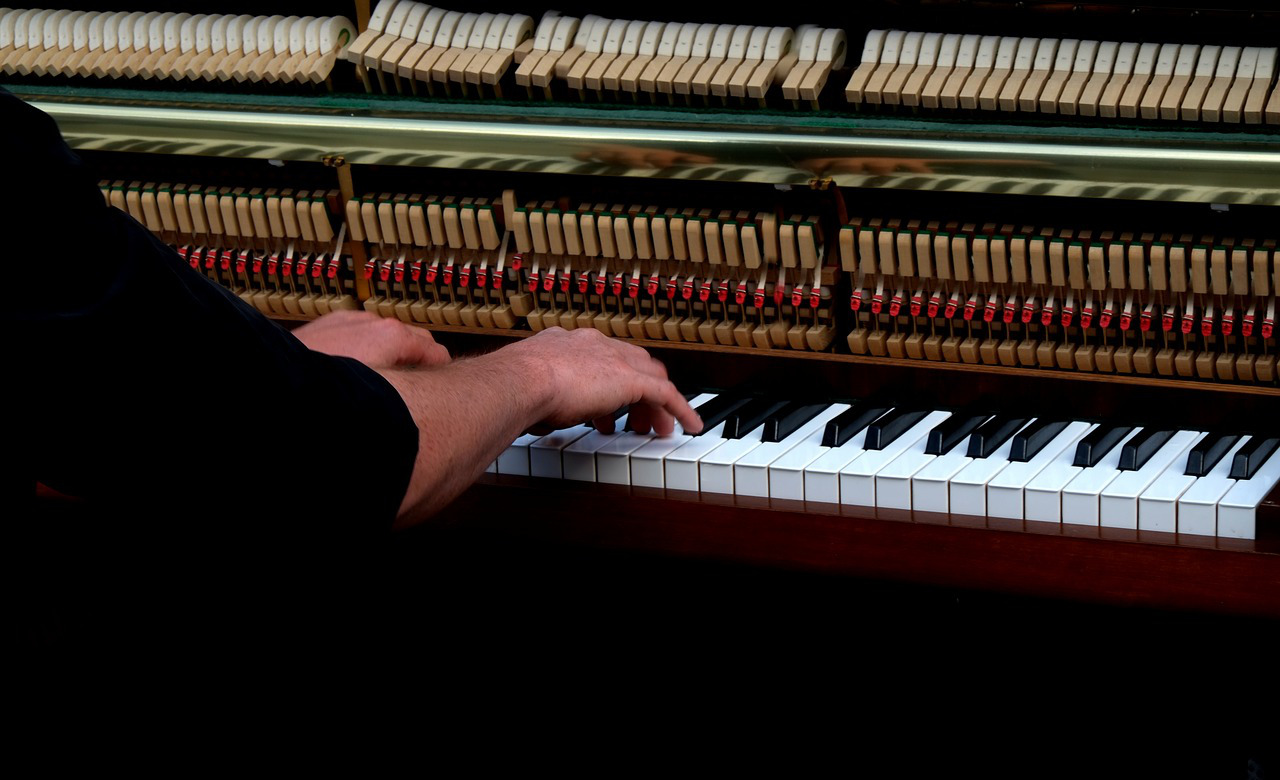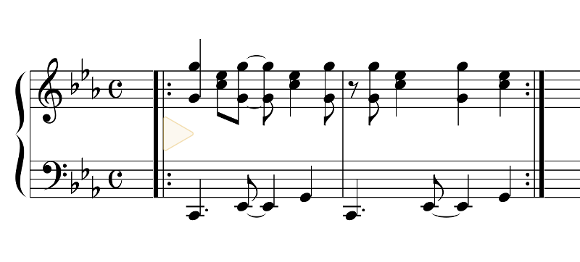My 2018 Music Goal, Part III

Practising All Day
I work at home, and one of the joys of that is being able to take piano breaks, and when I'm not working, I play the piano off and on throughout the day. Yes, I'm THAT into it. Housework be damned!
Once a week I see my piano teacher, who has referred to me as one of his more... interesting students... How should I take that? LOL. You see, I'm not really following a program so much as he is guiding me in independent study, and because I tear along finding many learning resources, he never knows entirely what to expect. Plus, I occasionally have really long practices.
Not two years ago yet, he was recommended as someone who could teach me how to play by ear. He's great, an experienced piano teacher with a master's degree in musical composition, who adapts to the student. And I must add that he obtained both his undergraduate and master's degrees while visually impaired. He can explain things as technically as I want, and I'm a geek chic so I want that, and he certainly proves that you can play without sheet music AND without looking at your hands. That last part will become more important when I start using a microphone.
I had initially thought about taking keyboard lessons. I have the impression that they are taught differently than piano to give you chord theory upfront, but because I am so interested in everything about music, they may have seemed watered down. I probably would have played with others sooner, but really, I want to do that AND solos AND accompaniments. Who knows what else?
I want it all
I think we can have it all. Just turn off the television and other distractions, focus on your goals, and go for it! All of our lives we have heard that we use very little of our brains and they are big powerful machines.
Maybe I was blessed to have a dad who coached kids in sports year round and who preached constant improvement alot. He encouraged; he motivated. He said that most people don't even try, but those who try, usually find they succeed. Success is empowering and motivating. This week, as I started my recital piece, I was thinking of his...
"Nobody ever drowned in sweat"
Thanks, Dad. I'm on my third day of alternating between playing the melody and trying to learn a montuno rhythm for it. Here's the link to my last post where you can hear the Jonny May version of Despacito that I'm attempting.
Just to get the rhythm, I had to transcribe two bars of the montuno, seen below. The transcribing was done on my iPad using Touch Notation by Kawai. Touch Notation lets me play what I write, so I have the audio feedback to know if I notated it correctly or mostly correctly. As an added benefit, if I have difficulties playing, my piano teacher can hear what I'm attempting. I'm sure there are other Apps and programs like it.

With these two bars, I spent most of my time counting 1-a-2-a-3-a-4-a while trying to get my fingers to cooperate. First, I played each hand separately and then hands together. At some point it clicked and I could play it over and over, but if I left the piano, I would forget it by the time I returned. You have heard that patience is a virtue. Be patient, it needs time to stick. If you have a keyboard, try it. It's a lot of fun. Once the pattern has fused with my being or something like that in C minor, I have to practise it in Ab, Eb, and Bb and then switch quickly between them. Just wondering if my neighbors still appreciate my playing...
Oh, and here I am reading music! I better explain that my recital piece is an exception to my "no sheet music" rule because it's well beyond my skill level. By June, with luck, I will have the whole song memorized. For other pieces, I use only lyrics and chords, just like most guitar players. Who knows, maybe one day I won't even need that.
Playing by Ear?
Not everyone learns piano by sight reading music. I have met people who play entirely by ear, who are able to listen to a piano arrangement and perfectly reproduce it. But really, unless you were gifted with great music ears and have unlimited time at the keyboard, it's unlikely that you will learn to play like that.
When I speak of wanting to play by ear, I mean learning chord theory, having ear training, learning rhythms, and eventually being able to improvise a melody and accompaniment. To some extent, your ears undergo training when you have played long enough, and maybe that is the reasoning behind the Royal Conservatory program putting chord theory in grade 5. Too many of us don't get that far.
The good news is piano training changes over time. When my mom took lessons, she started with scales, scales, and repetition, very boring. Somewhere along the way, they made the learning more fun, but simply put, the emphasis had all been on sight reading the music. Don't get me wrong, I'm really happy that I can sight read -- it's a useful skill -- but for too many years, teachers and systems concentrated on training our eyes and ignored the training of our ears. That is changing.
Suzuki Method
Although, according to Wikipedia, the Suzuki method was conceived in the mid-20th century, I was out of high school as it became popular, um, about 40 year's ago. Suzuki, a Japanese violinist, was attempting to mimic how children learned languages and he observed that children learn to speak before they learn to read, so he theorized they should learn to play piano before they learn to read musical notation. Today, there are more systems that emphasize ear training, and a major benefit is that students can start younger.
I envy my young niece who had more ear training in her piano play group than I ever had and is learning chords in her second year. I think it's funny to hear her say she doesn't want to play a song in A minor because that key is sooooo sad!
Chord Piano?
Back in high school, I heard of something called chord piano or chording. It was touted as a faster method for teaching adults piano, except nobody seemed to know anything about it. You have to understand that this pre-dated the Internet so information wasn't at our fingertips. Chording seems to be just chord theory but short on the theory, where you learn patterns of keys to create the chords, and then patterns of chords to create accompaniments. You or someone else sings the melody. It makes sense since patterns are how most people learn to play guitar.
Parts I & II
My 2018 Music Goal, Part I
My 2018 Music Goal, Part II
Image sources: Images 1 & 3 are from pixabay.com, image 2 is my creation.


@originalworks